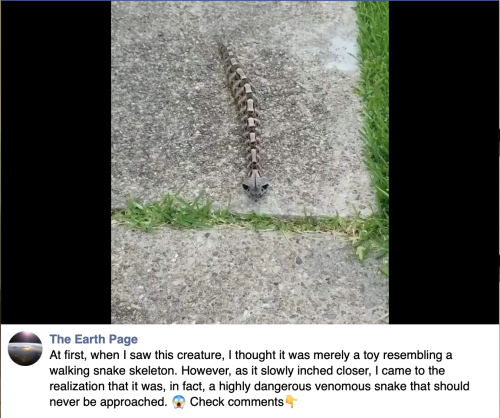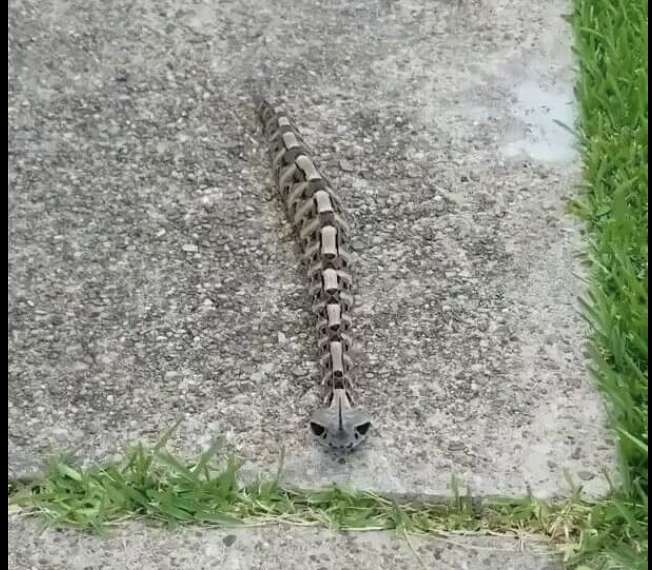So this mofo is a Gaboon Viper and I for one never want to meet it.

The Gaboon viper (Bitis gabonica) is a venomous snake native to the rainforests and savannas of sub-Saharan Africa. I decided it was so weird and cool that I’d collect some information about the Gaboon viper and its characteristics:
- Venom Calibration: Gaboon vipers possess long, hinged fangs located at the front of their mouth. They are the longest of any snake known. These fangs fold back when the snake’s mouth is closed but can be erected when it strikes. The Gaboon viper has an interesting adaptation where it can control the amount of venom it injects when biting its prey or defending itself. So, if you’re bitten you don’t immediately know if you’re going to die or not. This is known as venom calibration. By adjusting the amount of venom released, the snake conserves its venom and ensures it has enough for subsequent prey, reducing the risk of running out of venom.
- Non-Aggressive Nature: Despite being one of the largest venomous snakes in Africa, Gaboon vipers are generally considered non-aggressive. They are typically slow-moving and have a docile temperament, often relying on camouflage and their well-developed venom delivery system for defense. However, when threatened or cornered, they can become defensive and strike with lightning speed. LOL – The source says that it is “crucial to exercise caution and maintain a safe distance when encountering any venomous snake, including the Gaboon viper.” No shit, Sherlock.
- Habitat and Distribution: Gaboon vipers are found in a wide range of habitats within their distribution, including rainforests, woodlands, and savannas of sub-Saharan Africa. They are most commonly found in countries such as Nigeria, Cameroon, Equatorial Guinea, and Gabon, from which they derive their name. These snakes prefer areas with dense vegetation and access to water sources, such as rivers or swamps.
- Fangs: Gaboon vipers have exceptionally long fangs that can reach lengths of up to 2 inches (5 centimeters). These fangs are hollow and are used to inject venom into their prey. The fangs are located at the front of the upper jaw and are connected to venom glands. When the Gaboon viper bites, the fangs penetrate the prey’s flesh, allowing venom to flow into the wound.
- Camouflage: One of the most remarkable features of the Gaboon viper is its exceptional camouflage. Its coloration and pattern on its scales resemble the leaf litter found on the forest floor, enabling the snake to blend in seamlessly with its surroundings. This camouflage helps the Gaboon viper remain undetected by both prey and potential predators.
- Diet: Gaboon vipers are ambush predators that primarily feed on small to medium-sized mammals, such as rodents, rabbits, and small antelope (wait what?). They have a sit-and-wait hunting strategy, relying on their camouflage to ambush unsuspecting prey. When an opportunity arises, the Gaboon viper strikes quickly, injecting venom into its victim. The prey is then tracked and consumed once it succumbs to the venom.
That is all I know about Gaboon vipers and all I need to know. But dang, do they look like a skeleton!

